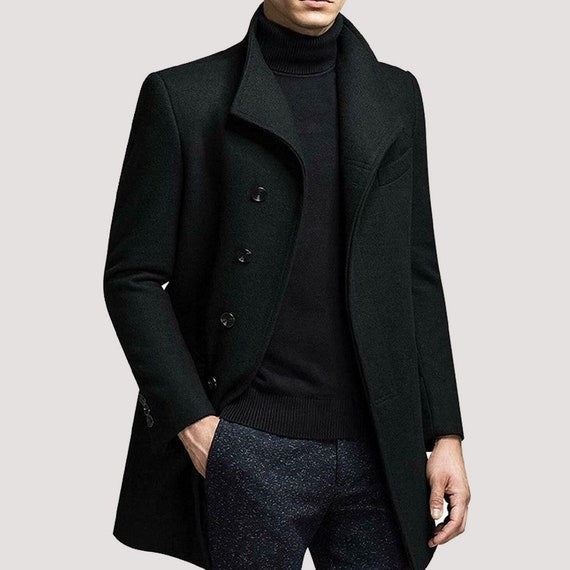What is the Warmest Material for an Overcoat?

Selecting the warmest material for an overcoat is a crucial decision, especially for those living in cold climates. The ideal overcoat not only complements your style but also provides adequate insulation against chilly temperatures.
Various materials offer different levels of warmth, breathability, and durability. In this exploration, we will delve into some of the warmest materials for overcoats, considering both natural and synthetic options.
- Wool: A Classic Choice for Warmth
Wool has long been a classic and reliable material for overcoats. Its natural insulation properties make it effective in retaining body heat, ensuring warmth even in harsh conditions. Merino wool, in particular, is highly regarded for its softness and excellent heat retention. Wool overcoats are also known for their breathability, preventing overheating while keeping you snug.
- Cashmere: Luxurious Warmth
For those looking for a touch of luxury along with warmth, cashmere is an excellent option. Derived from the soft undercoat of cashmere goats, this material is lightweight, yet incredibly warm. Cashmere overcoats are not only comfortable but also provide a sleek and sophisticated look. However, it's worth noting that cashmere can be more delicate compared to other materials, requiring proper care to maintain its luxurious feel and warmth.
- Down: Exceptional Insulation
Down, typically sourced from ducks or geese, is renowned for its exceptional insulation properties. Down-filled overcoats are lightweight, compressible, and efficiently trap heat to keep you warm in frigid temperatures. The high loft of down clusters creates a layer of warmth without adding bulk, making it a popular choice for those who prefer a streamlined look. However, it's essential to ensure that the down is ethically sourced to align with sustainability considerations.
- Shearling: Natural Warmth with Style
Shearling, a lambskin or sheepskin with the wool still attached, provides a natural and stylish solution for cold weather. The wool lining offers insulation, while the outer leather provides wind resistance. Shearling overcoats are not only warm but also exude a rugged elegance, making them a fashionable choice for winter wear. However, shearling can be relatively heavy, so it is important to consider the weight and how it aligns with your preferences.
- Synthetic Insulation: Technological Advancements
Advancements in textile technology have led to the creation of synthetic insulating materials that rival the warmth of natural options. Fabrics like Thinsulate, PrimaLoft, and other proprietary synthetic insulations provide excellent warmth without the added bulk. These materials are often water-resistant and retain their insulating properties even when wet, making them a practical choice for unpredictable weather conditions.
Conclusion
Selecting the warmest material for an overcoat involves considering factors beyond just insulation. Your lifestyle, preferred style, and local climate should all play a role in the decision-making process. Whether you opt for the classic warmth of wool, the luxury of cashmere, the lightweight efficiency of down, the rugged charm of shearling, or the technological advancements in synthetic insulation, each material brings its unique qualities to the table.
Ultimately, finding the perfect balance between style and functionality will ensure that your overcoat not only keeps you warm but also suits your individual preferences.





